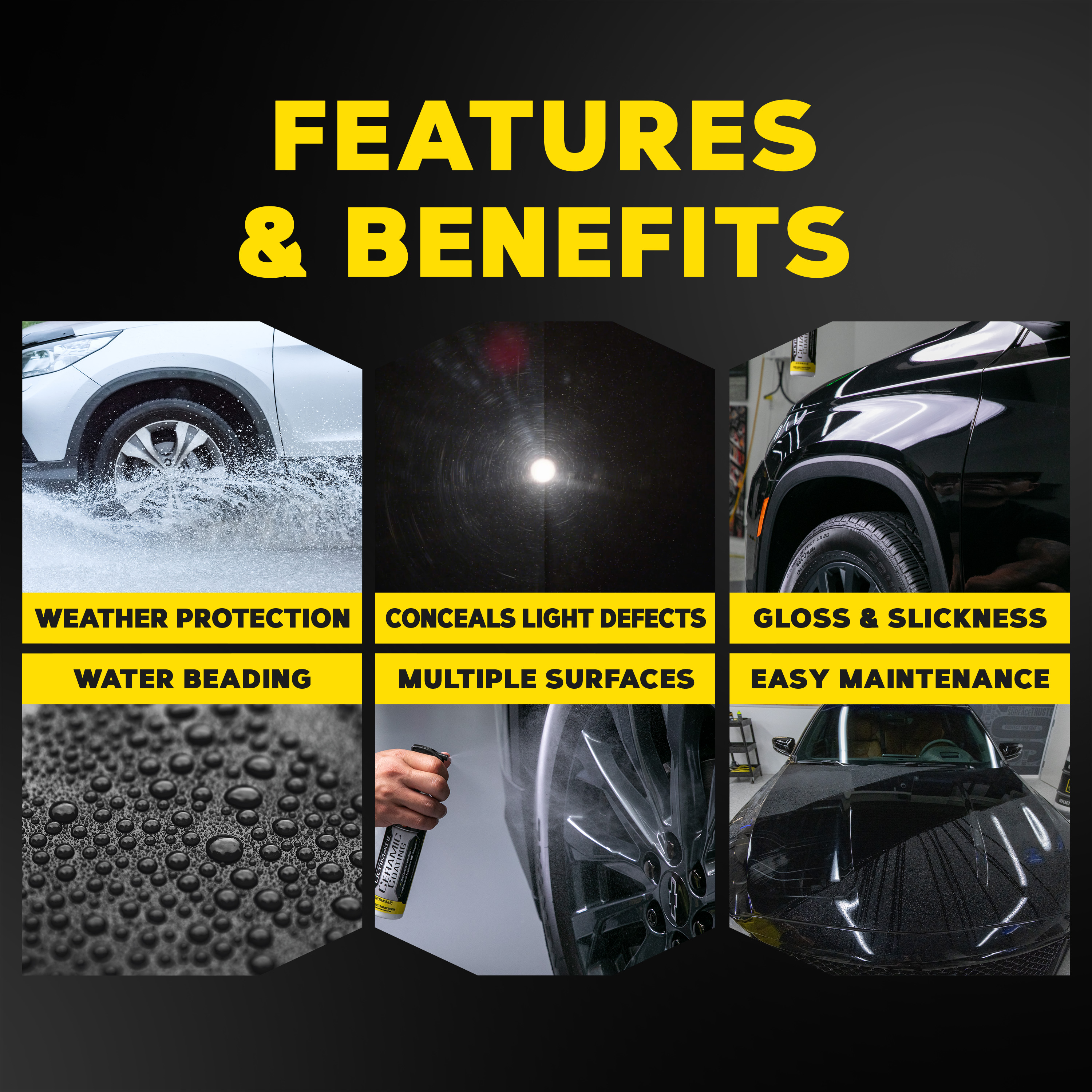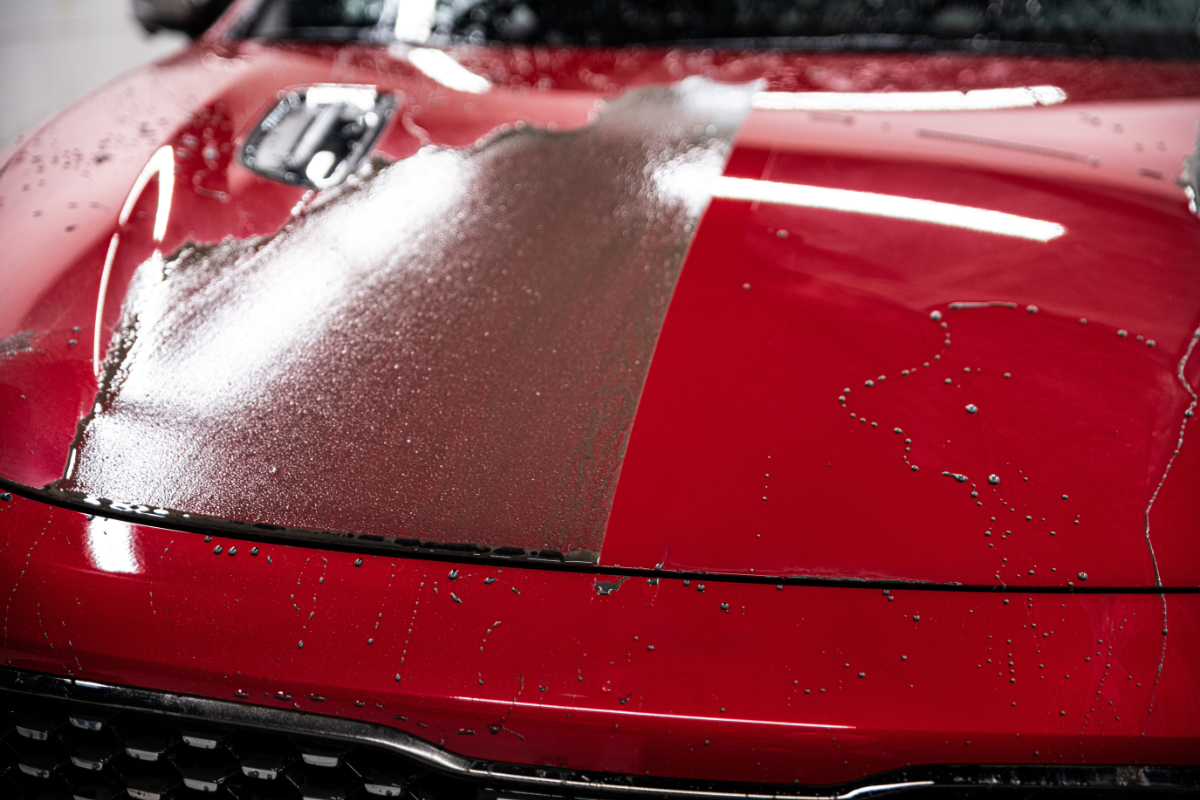Why Ceramic Coating Is the Ultimate Service for a Remarkable Finish
Ceramic layer has arised as a leading solution for those seeking a remarkable surface for their lorries, many thanks to its amazing durability and safety attributes. What elements really established ceramic coating apart?
What Is Ceramic Covering?

When used properly, ceramic layer creates a hydrophobic surface that wards off water and dust, making it much easier to maintain and clean. Unlike standard waxes or sealants, which normally offer temporary defense, ceramic layers can last for several years, depending upon the item top quality and application approach. The procedure of using ceramic covering needs precise prep work, including extensive cleaning and in some cases paint modification, to guarantee optimum bonding and effectiveness.
Ceramic coverings are not restricted to automobile surfaces; they can likewise be used on various materials, including glass, steel, and plastics, offering a functional option for improving defense. On the whole, ceramic coating stands for a significant improvement in surface protection technology, integrating both useful and aesthetic advantages for a large range of applications.
Benefits of Ceramic Coating
While numerous surface area defense alternatives exist, the advantages of ceramic coating stand out as a result of its distinct buildings and durable efficiency. Among the key benefits is its remarkable resilience. Ceramic Coating Philadelphia. Unlike traditional wax or sealers that call for regular reapplication, ceramic layers provide a resistant layer that can last for several years, considerably reducing maintenance initiatives
Another notable benefit is boosted security against ecological impurities. Ceramic coatings develop a hydrophobic surface that fends off water, dirt, and various contaminants, making it simpler to clean. This feature not just protects the vehicle's appearance but additionally reduces the risk of corrosion and oxidation, specifically in extreme weather.
In addition, ceramic finishings supply premium resistance to UV rays, avoiding fading and destruction of paint in time. This UV protection is critical for preserving the visual value of cars and surfaces exposed to route sunlight.
In addition, the glossy coating accomplished with ceramic finish enhances the general aesthetic allure, offering surface areas a showroom-quality sparkle. On the whole, ceramic finishings stand for a substantial advancement in surface protection modern technology, supplying enduring benefits that provide to both functional and aesthetic requirements.
How It Works
Comprehending the science behind ceramic finishes discloses just how they offer such exceptional defense and long life. At its core, a ceramic covering is a fluid polymer that chemically bonds with the vehicle's manufacturing facility paint. This bonding develops a protective layer that is both oleophobic and hydrophobic, repelling water, dirt, and oil. The main part of most ceramic finishings is silicon dioxide (SiO2), which is originated from quartz. This compound contributes to the coating's hardness and resistance to scratches, UV rays, and environmental impurities.
The application process includes numerous actions, including surface area prep work, which is critical to achieving optimal adhesion. Once used, the finish goes through a treating process, throughout which it solidifies and creates a semi-permanent bond with the paint surface area. This bond is what identifies ceramic coverings from typical waxes and sealants, giving a longer-lasting safety barrier that can withstand for several years.
Moreover, the thickness of the covering can boost its safety qualities, ensuring that it can hold up against severe conditions. Ultimately, the scientific research of ceramic coatings incorporates sophisticated materials with ingenious application strategies to provide an unrivaled level of defense and visual enhancement for automobiles.
Comparison With Typical Methods
When contrasted to conventional paint defense techniques such as waxes and sealers,The benefits of ceramic finishes end up being especially noticeable. While waxes provide a short-lived luster, typically lasting a few weeks to a pair of months, ceramic coverings provide a durable protective layer that can withstand for several years. This durability dramatically decreases the regularity of reapplication, making ceramic coatings a much more cost-efficient solution in time.
In addition, traditional methods commonly require substantial prep work and numerous applications to attain a satisfying degree of defense. In contrast, ceramic coverings bond at a molecular level with the car's surface area, producing a durable guard versus ecological pollutants like UV rays, acid rain, and roadway salts. This bond enhances the automobile's resistance to scrapes and swirl marks, which prevail with typical waxes and sealants.
Moreover, the hydrophobic buildings of ceramic finishes ward off water and dirt, leading to simpler cleansing and maintenance. On the other hand, wax and sealant-treated surfaces can draw in gunk, demanding even more frequent washing - Ceramic Coating Philadelphia. Generally, ceramic finishes not just provide superior protection however likewise provide a more find more information aesthetically appealing and long-lasting surface, developing them as the preferred choice for critical lorry proprietors
Application and Upkeep Tips

Making use of a foam applicator, apply go the finishing in tiny sections, adhering to the producer's standards concerning density and overlap. Allow adequate treating time in between coats, normally 24 hours, to make sure appropriate bonding. After application, it is essential to avoid exposure to water or severe elements for a minimum of a week to enable the coating to fully treat.
Additionally, utilizing a ceramic maintenance spray can enhance the finish's hydrophobic residential or commercial properties and long life. Regular assessments for any kind of indicators of wear will certainly assist keep the finishing's stability and maintain that pristine finish.
Verdict
In verdict, ceramic finish emerges as a premium choice for achieving a remarkable auto surface. By developing a robust bond with manufacturing facility paint, ceramic coating properly shields versus scratches, UV rays, and ecological pollutants.
